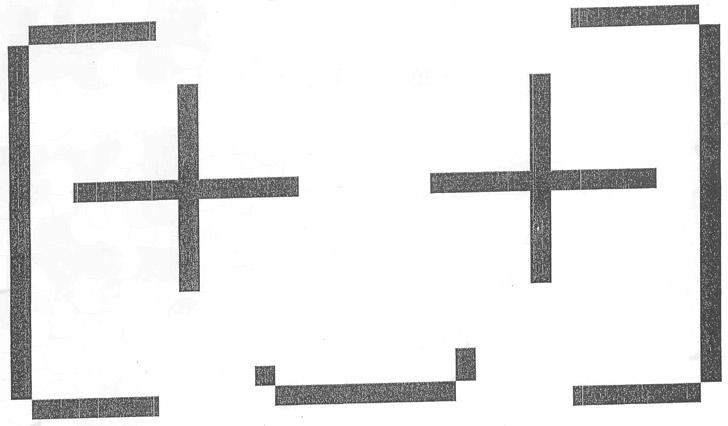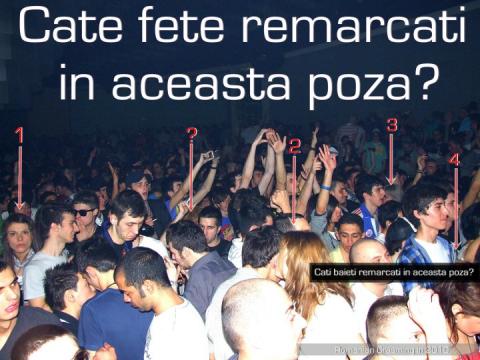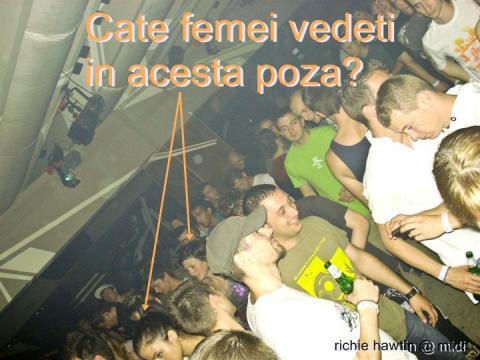De ce sunt atat de multi barbati la club?
photos via amdraci.ro
Text from “Inside clubbing. Sensual Experiment in the Art of being Human” by Phil Jackson / Berg 2004
Dace re-emerged as a mass form of social experience, particularly among man, and the majority of them had spent the preceding years standing round in clubs, clutching pints, watching woman groove around their handbags and fearing that dancing would emasculate them and leave them open to ridicule by their peers. In 1984, when I first started clubbing, before the Ecstasy Rave movement had begun, I would be one of the few men going for it on the dance floor in clubs, usually receiving scowls from the other man around me. It did not leave me enamoured of the club environment, as it seemed like little more then a noisy, angst-ridden, overcrowded pub.
When I went back into clubs, in 1989 the floor was heaving with tight-jawed men on Ecstasy, waving their hands in the air and grinning so hard you thought their faces were going to rip. Many of these men were the same ones who had resolutely refused to dance only a few years earlier. The difference was extraordinary; the sheer physical energy produced in the club environment immediately went ballistic and the levels of angst and machismo, witch was so noticeable in the past, diminished. Both these alterations were seen largely in terms of the effects of Ecstasy by clubbers themselves, but in reality they were as much to do with the simple act of dancing than any property inherent by the drug. The drug reduced people’s self-consciousness and fear of censure to the point where they could enjoy dancing. Man moved from being drunken wallflowers to being much part of the club environment as they started to discover dancing for themselves.
Some men had, of course, always danced, but the breakdown of partner-based dancing left men without a major role to play on the dance floor. The dance styles that man partook in during the two decades before rave appeared tended to stress aggression (pogoing and slam-dancing of punk) or competition (northern souls, disco and break-dancing). They placed heavy emphasis on the machismo of dance, either through stressing a drunken, violent physicality or by creating styles that had to be mastered before they could be displayed. This left men split into dancers and non-dancers and the visibility of the dance floor kept the majority of them on the periphery, too self-conscious to step forward and risk making fools of themselves.
The arrival of Ecstasy and the rave scene altered the face of dance by rejecting the adoption of any particular dance style and by placing it in an environment that viewed macho posturing as a complete waste of time and energy. The thump-ing bass and accelerated beats of the drum machine were exhilarating enough to drive drugged-up men onto the dance floor and, once there, they generated a muscular, vigorous and sweat-drenched style of dance that replaced outward aggression with a form of internal frenzy. It felt masculine and men could get on the floor and do their own thing without fear of censure from their either men or women.
The inclusion of men on the dance floor also had positive effect on women’s dancing; suddenly they wee no longer dancing under the watchful eyes of sexually tense men who were only in the club to get pissed and pull. Instead everyone one was in it together and the general air of delirium granted both genres an increased sense of freedom on the dance floor as the sheer sexual ans sensual aspects of dance resurfaced via the on-going liberation of the body from the judgmental gaze of the gendered once.
Posted in academia on August 27th, 2010 by fresh good minimal | 8 Comments




 gmail
gmail com
com
